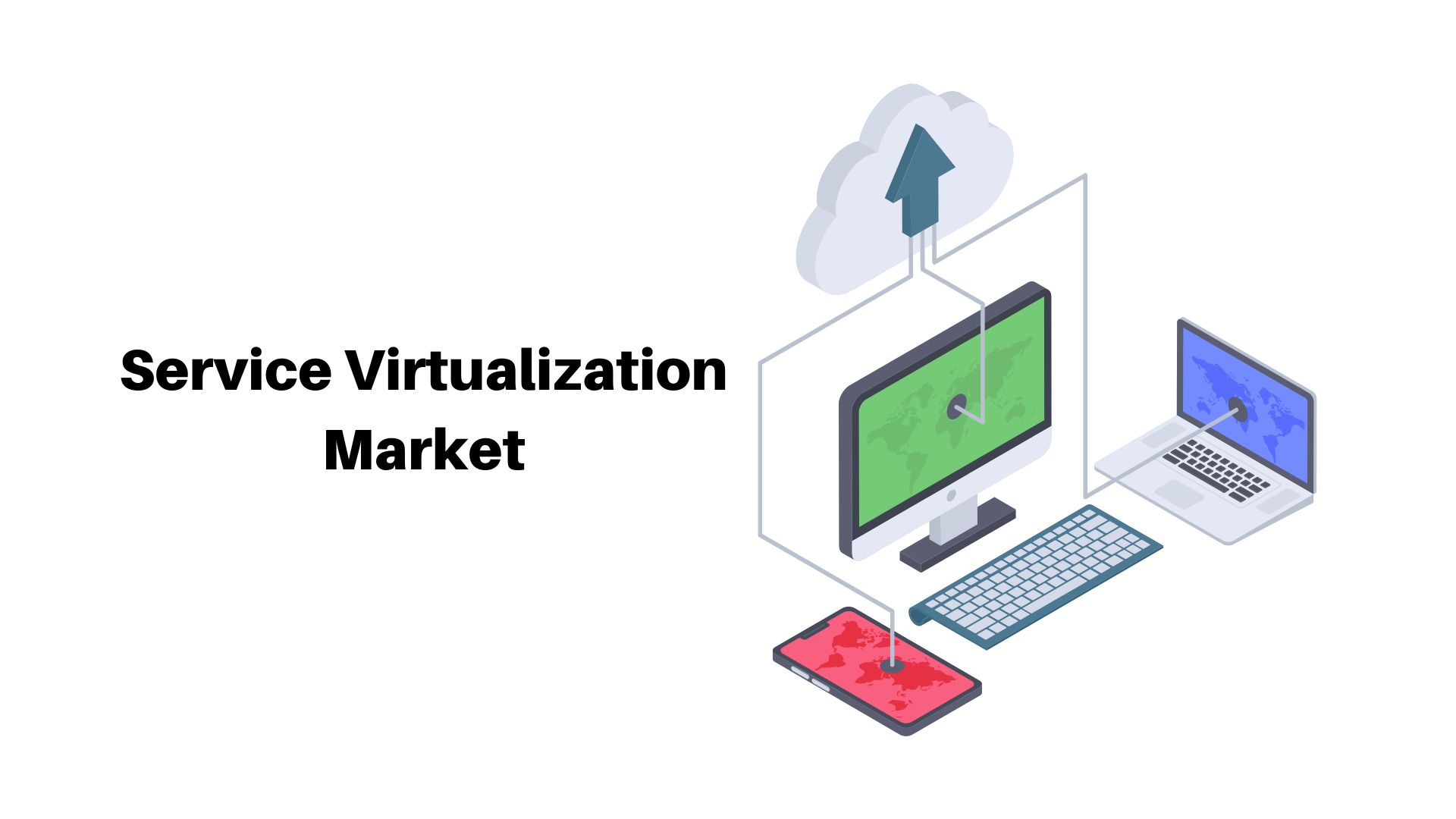Service Virtualization Market Size Will Reach USD 2534.30 Million By 2032

Page Contents
Published Via 11Press: According to market.us, the global Service Virtualization market size was valued at USD 540.94 million in 2022 and is projected to expand at a compound annual growth rate (CAGR) of 16.7% from 2022-2032. By 2032, market.us predicts this amount will reach USD 2534.30 million.
The market growth is being spurred on by an increasing need for cost-effective and faster software development and testing solutions, as well as the rising adoption of agile and DevOps methodologies. Furthermore, continuous testing needs and the requirement to simulate complex business scenarios are expected to fuel demand for Service Virtualization solutions.
In 2020, the standalone Service Virtualization tools segment held a commanding market share of over 50% due to rising demand for independent Service Virtualization tools that can work with any software testing tool. On the other hand, integrated Service Virtualization tools are expected to experience substantial growth over the forecast period due to the growing adoption of integrated testing platforms with end-to-end testing capabilities.
Request For Sample Report Here: https://market.us/report/service-virtualization-market/request-sample

Regional Snapshot
- North America dominated the global Service Virtualization market in 2020, holding a market share of over 35%. This region's major players and early adoption of agile and DevOps methodologies are driving market growth there. Furthermore, high demand for cost-effective yet faster software development/testing solutions across industries such as BFSI, healthcare, and retail is anticipated to further fuel growth there.
- Europe is the second-largest market for Service Virtualization, boasting a share of over 25%. Digital transformation initiatives and an increasing need for comprehensive testing solutions across industries like IT & telecommunications & retail are expected to fuel growth within this region.
- The Asia Pacific region is projected to experience significant growth in the Service Virtualization market over the forecast period. The rising adoption of digital transformation initiatives and demand for cost-effective testing solutions in countries such as India, China, and Japan are driving market growth within this region. Furthermore, organizations are investing more in IT infrastructure while adopting agile and DevOps methodologies which are predicted to further fuel its expansion.
- Latin America and the Middle East & Africa are projected to experience moderate growth in the Service Virtualization market over the forecast period. The increasing adoption of digital transformation initiatives and the need for cost-effective testing solutions are expected to drive market expansion in these regions; however, a lack of awareness and slow adoption of advanced testing methodologies may hinder market expansion somewhat.
Drivers
- In today's competitive software development and testing landscape, companies are seeking cost-effective and faster solutions. Service Virtualization provides a cost-effective and efficient answer to common problems encountered during software development and testing such as lack of access to production systems, complex testing environments, and continuous quality assurance checks. By simulating dependent system behavior, developers and testers can work in parallel on projects while speeding up the software creation and testing process.
- Agile and DevOps methodologies are seeing widespread adoption in the software development industry, with Service Virtualization playing a crucial role. Service Virtualization helps simulate system behavior so developers and testers can work simultaneously – thus cutting down on time-consuming testing as well as costs associated with software development and testing.
- Rising Demand for Continuous Testing: With the growing adoption of agile and DevOps methodologies, continuous testing has become more essential. Service Virtualization enables this shift by providing access to dependent systems which may not be accessible during testing.
- Need to Simulate Complex Business Scenarios: Service Virtualization helps simulate complex business scenarios, such as high transaction volumes, peak loads, and system failures that would be difficult to reproduce in a live testing environment. This enables developers and testers to detect and fix issues early in the software development lifecycle – thus reducing the production risk of issues.
- Increased Adoption of Cloud-based Solutions: The growing acceptance of cloud-based solutions is driving demand for cloud-based Service Virtualization solutions. Cloud-based Service Virtualization solutions offer scalability, flexibility, and cost efficiency, allowing organizations to access testing environments from any location around the globe.
Restraints
- Limited Awareness and Understanding: Service Virtualization is still relatively new, so many organizations may not be aware of its advantages or how to implement it effectively. This lack of awareness could potentially limit adoption and market growth in this space.
- Integration Challenges: Service Virtualization necessitates integration with existing systems and processes, which can be a complex and time-consuming undertaking. Furthermore, differences in technology platforms and architectures may impede the adoption of Service Virtualization.
- Security Concerns: Service Virtualization involves simulating dependent systems and services, which could present security risks if not properly secured. Organizations should guarantee their Service Virtualization solutions are secure and compliant with data protection regulations in order to reduce security risks.
- Lack of Skilled Professionals: Service Virtualization requires experienced personnel with knowledge of software development, testing, and DevOps methodologies. Unfortunately, the shortage of this personnel could prevent the widespread adoption of this solution.
- High Implementation Costs: Service Virtualization solutions may come with high implementation costs, such as licensing fees, hardware costs, and integration fees. These costs could potentially limit the adoption of this technology among small and medium-sized enterprises.
Opportunities
- Growth of DevOps and Agile Methodologies: As more businesses adopt DevOps and Agile techniques for software development and testing, Service Virtualization offers valuable support. Service Virtualization makes this possible by enabling developers and testers to work simultaneously and simulate dependent systems, thus expediting the software creation and testing process.
- Increasing Complexity of Software Systems: Software systems are becoming more intricate due to the rise in microservices, APIs, and cloud-based applications. Service Virtualization offers a solution to this complexity by simulating dependent systems and services to reduce errors or issues during production.
- Need for Continuous Testing: As Agile and DevOps methodologies become more mainstream, continuous testing has become an essential requirement. Service Virtualization facilitates this process by giving access to dependent systems and services that may not be accessible during testing.
- Adoption of cloud-based solutions: Cloud adoption is on the rise, and Service Virtualization presents significant opportunities in this space. Cloud-based Service Virtualization solutions offer scalability, adaptability, and cost efficiency; they enable organizations to access testing environments from anywhere around the globe.
- Need for Cost-Effective Testing Solutions: As testing costs continue to rise, particularly among small and medium-sized enterprises (SMEs), there is an increasing need for cost-effective testing solutions. Service Virtualization offers one such solution by enabling developers and testers to work simultaneously, thus cutting down on time-consuming tests while increasing quality assurance.
View Detailed TOC of the Report | https://market.us/report/service-virtualization-market/table-of-content/
Challenges
- Lack of Standardization: Service Virtualization is still relatively unexplored, and lacks standardization in terms of methodologies and tools. This lack of clarity could hamper its adoption and make it more challenging for organizations to successfully implement it.
- Integration Challenges: Integration of Service Virtualization requires seamless integration with existing systems and processes, which can be a tedious and time-consuming task. Furthermore, differences in technology platforms and architectures may pose additional obstacles that hinder its adoption by businesses.
- Security Issues: Service Virtualization involves simulating dependent systems and services, which could present security risks if not properly secured. Organizations should guarantee their Service Virtualization solutions are secure and compliant with data protection regulations to reduce vulnerabilities.
- Limited Awareness and Understanding: Service Virtualization is still relatively new, so many organizations may not be aware of its advantages or how to implement it effectively. This lack of understanding could potentially obstruct the adoption and market expansion of this technology.
- High Implementation Costs: Service Virtualization solutions may come with high implementation costs, such as licensing fees, hardware costs, and integration fees. These high costs could potentially stifle the adoption of this technology among small and medium-sized enterprises.
Key Market Segments
Type
- Managed Services
- Professional Services
Application
- On-Premises
- Cloud
Key Market Players
- CA Technologies
- IBM
- Micro Focus
- SmartBear Software
- Parasoft
- Tricentis
- Cavission Systems
- Cigniti
- Cognizant
- Wipro
- Sogeti
- Expleo
- Maveric Systems
- Prolifics
- Axway
- Crosscheck Networks
- Delphix
- Postdot Technologies
- WireMock
- Solution-Soft Systems
Report Scope
| Report Attribute | Details |
| The market size value in 2022 | USD 540.94 Mn |
| Revenue forecast by 2032 | USD 2534.30 Mn |
| Growth Rate | CAGR Of 16.7% |
| Regions Covered | North America, Europe, Asia Pacific, Latin America, and Middle East & Africa, and Rest of the World |
| Historical Years | 2017-2022 |
| Base Year | 2022 |
| Estimated Year | 2023 |
| Short-Term Projection Year | 2028 |
| Long-Term Projected Year | 2032 |
Frequently Asked Question
Q: What is the current market size for the Service Virtualization market?
A: According to a report by Market.us, the Service Virtualization market was valued at USD 540.94 billion in 2022 and is expected to reach USD 2534.30 billion by 2032, growing at a CAGR of 16.7% during the forecast period.
Q: What are the key segments of the Service Virtualization market?
A: The Service Virtualization market can be segmented based on Type (Managed Services, Professional Services), By Application (On-Premises, Cloud), and geography (North America, Europe, Asia-Pacific, Latin America, and Middle East & Africa).
Q: Who are the key players in the Service Virtualization market?
A: Some of the key players in the Service Virtualization market include CA Technologies, IBM, Micro Focus, SmartBear Software, Parasoft, Tricentis, Cavission Systems, Cigniti, Cognizant, Wipro, Sogeti, Expleo, Maveric Systems, Prolifics, Axway, Crosscheck Networks, Delphix, Postdot Technologies, WireMock, Solution-Soft Systems.
The team behind market.us, marketresearch.biz, market.biz and more. Our purpose is to keep our customers ahead of the game with regard to the markets. They may fluctuate up or down, but we will help you to stay ahead of the curve in these market fluctuations. Our consistent growth and ability to deliver in-depth analyses and market insight has engaged genuine market players. They have faith in us to offer the data and information they require to make balanced and decisive marketing decisions.



